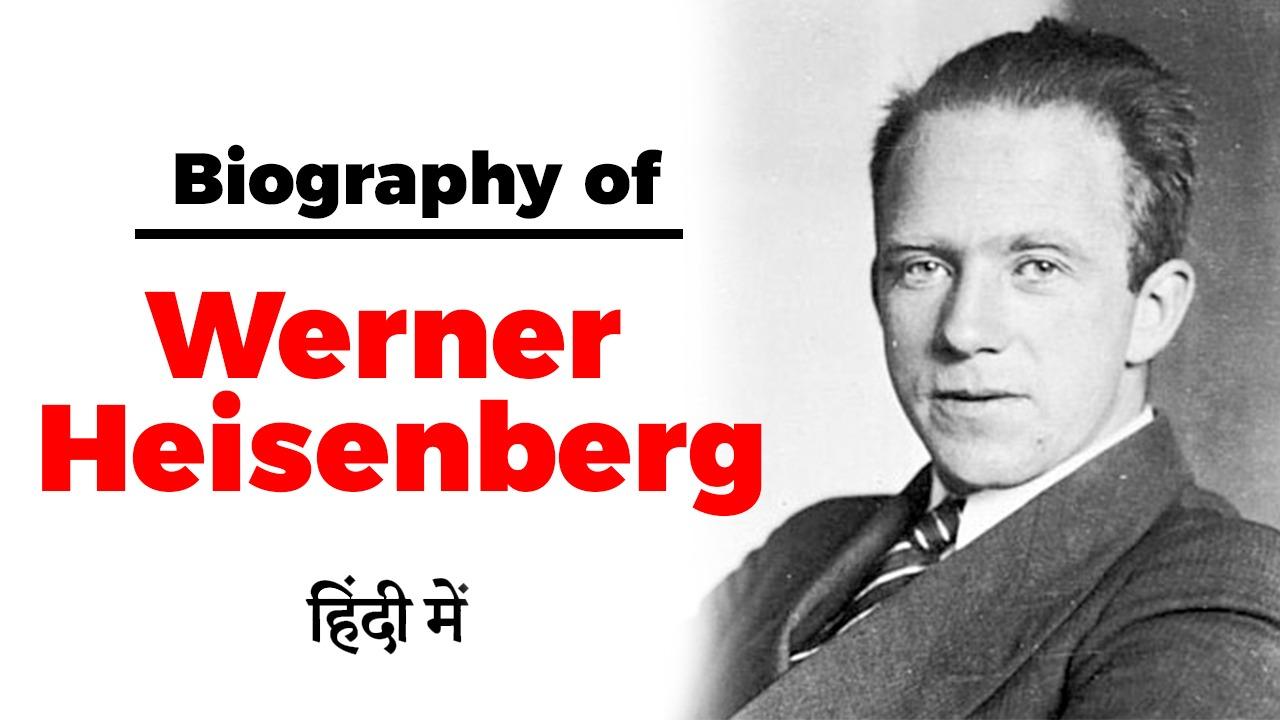Table of Contents
EARLY LIFE
- Werner Karl Heisenberg was born on 5 December 1901 in Würzburg, northern Bavaria, and moved to Munich at the age of nine when his father became a professor of Greek studies at the university.
- He studied physics and mathematics from 1920 to 1923 at the Ludwig Maximilian University of Munich and the Georg-August University of Göttingen.
- At Munich, he studied under Arnold Sommerfeld and Wilhelm Wien. At Göttingen, he studied physics with Max Born and James Franck and mathematics with David Hilbert. He received his doctorate in 1923, at Munich under Sommerfeld.
CAREER
- From 1924 to 1927, Heisenberg was a Privatdozent at Göttingen, meaning he was qualified to teach and examine independently, without having a chair.
- From 17 September 1924 to 1 May 1925, Heisenberg went to do research with Niels Bohr, director of the Institute of Theoretical Physics at the University of Copenhagen.
- His seminal paper, “Quantum theoretical reinterpretation of kinematic and mechanical relations”, was published in September 1925.
- On 1 May 1926, Heisenberg began his appointment as a university lecturer and assistant to Bohr in Copenhagen.
CAREER
- It was in Copenhagen, in 1927, that Heisenberg developed his uncertainty principle, while working on the mathematical foundations of quantum mechanics.
- In 1927, Heisenberg was appointed professor theoretical physics and head of the department of physics at the University of Leipzig; In his first paper published from Leipzig, Heisenberg used the Pauli exclusion principle to solve the mystery of ferromagnetism.
- Also in 1929, Heisenberg went on a lecture tour of China, Japan, India, and the United States.
NOBEL PRIZE
- Heisenberg’s paper establishing quantum mechanics has puzzled physicists and historians.
- In 1928, Albert Einstein nominated Heisenberg, Born, and Jordan for the Nobel Prize in Physics, The announcement of the Nobel Prize in Physics for 1932 was delayed until November 1933
- It was at that time that it was announced Heisenberg had won the Prize for 1932 “for the creation of quantum mechanics.
NAZI GERMANY
- To keep himself aloof of politics was no longer possible after Hitler’s rise to power in 1933.
- When Sommerfeld reached retirement age in 1935, Heisenberg was the obvious candidate to succeed him at Munich. But Nazi ideology was now raging in physics too: Johannes Stark and Philip Lenard, both Nobel-prize winners, characterized modern theories like relativity and quantum mechanics as “Jewish physics”.
- This was the start of a campaign against Heisenberg and Sommerfeld, which ended in 1939 when Wilhelm Müller was named as Sommerfeld’s successor.
WEAPON WAR
- On 29 June 1936, a Nazi Party newspaper published a column attacking Heisenberg. On 15 July 1937, he was attacked in a journal of the SS.
- In mid-1936, Heisenberg presented his theory of cosmic-ray showers in two papers. Four more papers appeared in the next two years.
- In December 1938, the German chemists Otto Hahn and Fritz Strassmann sent a manuscript to Naturwissenschaften reporting they had detected the element barium after bombarding uranium with neutrons.Frisch confirmed this experimentally on 13 January 1939.
WEAPON WAR
- The German nuclear weapons program, known as Uranverein, was formed on 1 September 1939, the day World War II began
- Together with other nuclear scientists, who called themselves the Uranium Club, Heisenberg began investigating the possible wartime uses of Hahn’s discovery of nuclear fission.
- To this day, physicists and historians of physics debate Heisenberg’s motivations and role in this effort.
WEAPON WAR
- In February 1943, Heisenberg was appointed to the Chair for Theoretical Physics at the Friedrich-WilhelmsUniversität.
- From 18–26 October, he travelled to German-occupied Netherlands. In December 1943, Heisenberg visited German-occupied Poland.
- The United States Office of Strategic Services sent agent Moe Berg to attend the lecture carrying a pistol, with orders to shoot Heisenberg if his lecture indicated that Germany was close to completing an atomic bomb.
POST WAR
- 1947, Heisenberg presented lectures in Cambridge, Edinburgh and Bristol. Heisenberg contributed to the understanding of the phenomenon of superconductivity with a paper in 1947and two papers in 1948, one of them with Max von Laue
- In 1951 Heisenberg agreed to become the scientific representative of the Federal Republic of Germany at the UNESCO conference, with the aim of establishing a European laboratory for nuclear physics.
- On the 1st July 1953 Heisenberg signed the convention that established CERN on behalf of the Federal Republic of Germany.
POST WAR
- In late 1955 to early 1956, Heisenberg gave the Gifford Lectures at St Andrews University, in Scotland, on the intellectual history of physics.
- The lectures were later published as Physics and Philosophy: The Revolution in Modern Science. During 1956 and 1957, Heisenberg was the chairman of the Arbeitskreis Kernphysik (Nuclear Physics Working Group.
- From 1957 onwards, Heisenberg was interested in plasma physics and the process of nuclear fusion
DEATH
- In his late-sixties Heisenberg penned his autobiography for the mass market. In 1969 the book was published in Germany, in early 1971 it was published in English and in the years thereafter in a string of other languages.
- Heisenberg died of kidney cancer at his home, on 1 February 1976






















 WhatsApp
WhatsApp